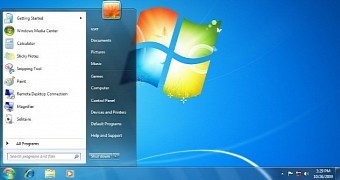This month’s Patch Tuesday rollout also includes a new monthly rollup for Windows 7, the operating system that no longer receives security updates since January this year.
In other words, Windows 7 is now an unsupported platform that doesn’t receive any patches anymore, unless you are part of the ESU program.
Microsoft is offering extended security updates for companies in exchange for an annual fee, with the pricing to increase gradually every year. The company ships updates as part of its ESU program for three years after an operating system is discontinued.
The new monthly rollup for Windows 7 devices enrolled in the ESU program is KB4580345 (and it comes alongside security-only update KB4580387), and it obviously includes several security fixes that aren’t at all surprising given the update lands on a Patch Tuesday cycle.
According to the official changelog, the update includes “security updates to Windows App Platform and Frameworks, Windows Graphics, Windows Shell, Windows Silicon Platform, Windows Cloud Infrastructure, Windows Fundamentals, Windows Authentication, Windows Virtualization, Windows Core Networking, Windows Network Security and Containers, Windows Storage and Filesystems, Windows SQL components, and Windows Remote Desktop.”
At the same time, the update resolves an issue experienced when a Null port is created through the user interface – this is a bug that has also been resolved in Windows 10 with the release of cumulative updates this month.
Microsoft explains that a screen flickering problem has also been corrected with the new monthly rollup, so if you previously encountered such glitches on Windows 7, this monthly rollup could actually bring everything back to normal.
“Addresses an issue that might cause the Graphics Device Interface (GDI) to access internal regions incorrectly causing unexpected UI experiences. This issue can cause additional or missing screen elements, screen flickering, or a trailing screen,” Microsoft says.
KB4580345 also corrects the end date for DST in 2021 for the Fiji Island, while also bringing a fix for the Group Policy deleting critical files when users enabled the “Delete local user profile policy” rule.
The October 2020 monthly rollup for Windows 7 comes with just one known issue, but this is a bug that’s been around for a while and which affects CSVs.
“Certain operations, such as rename, that you perform on files or folders that are on a Cluster Shared Volume (CSV) may fail with the error, “STATUS_BAD_IMPERSONATION_LEVEL (0xC00000A5)”. This occurs when you perform the operation on a CSV owner node from a process that doesn’t have administrator privilege,” Microsoft says, adding that users can perform the operation from a process that has administrator privileges or from a node that doesn't have CSV ownership to get around the glitch.
While Microsoft has already discontinued Windows 7 for consumers, it doesn’t necessarily mean that the world has already abandoned this operating system. According to third-party data, Windows 7 is still running on over 20 percent of the computers out there, and if the same trend is maintained, there’s a good chance that this operating system won’t go dark too soon.
In fact, Windows 7 seems to follow the same declining trend as Windows XP, the OS that got pulled in April 2014. Windows XP is still being used by some 2 percent of the PCs worldwide despite the obvious security risks that are created by unsupported software.
Microsoft keeps pushing for users to upgrade their devices, though it goes without saying that moving from Windows XP or Windows 7 to Windows 10 could also require hardware upgrades to get the full feature package (such as Windows Hello, for example).

 14 DAY TRIAL //
14 DAY TRIAL //